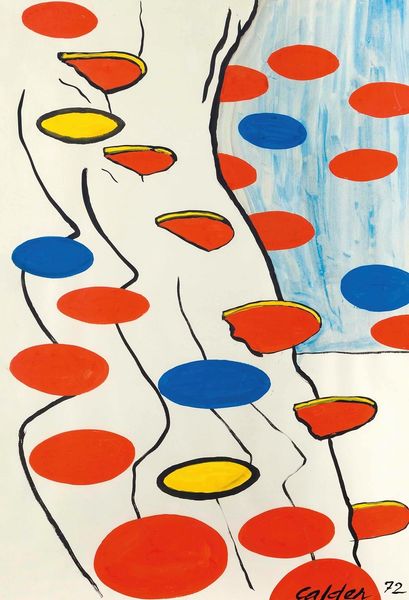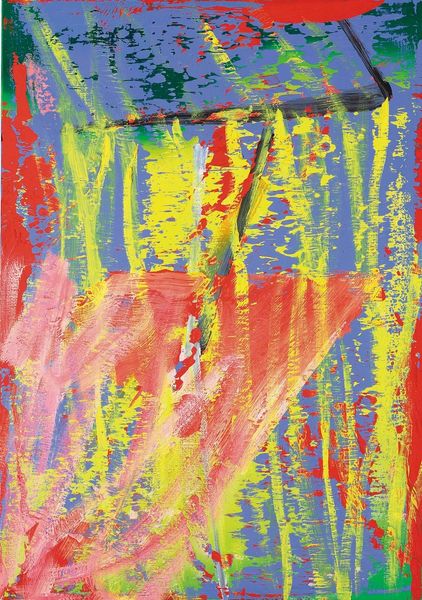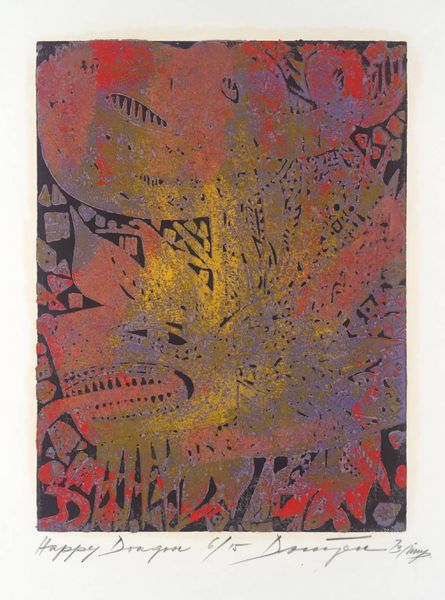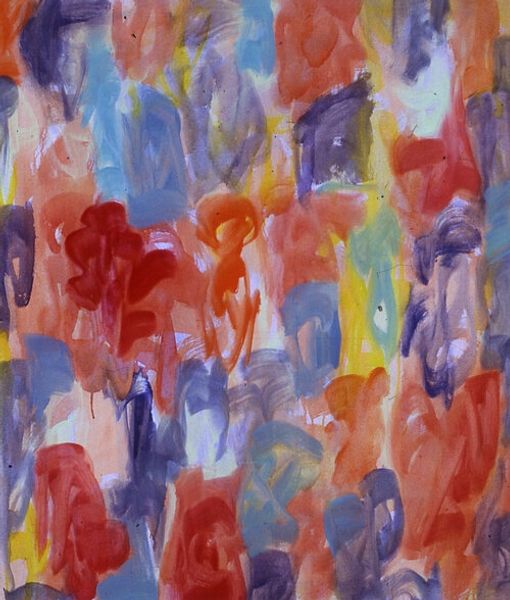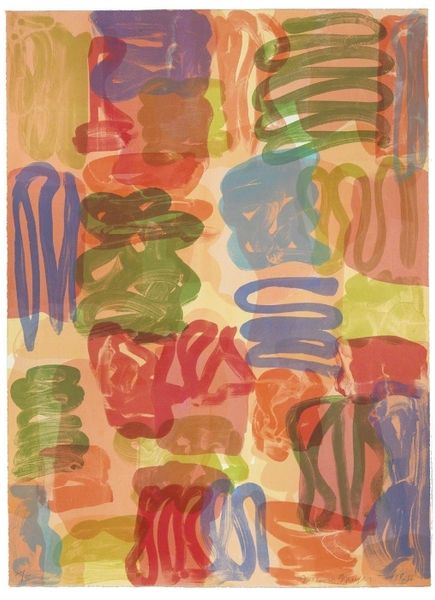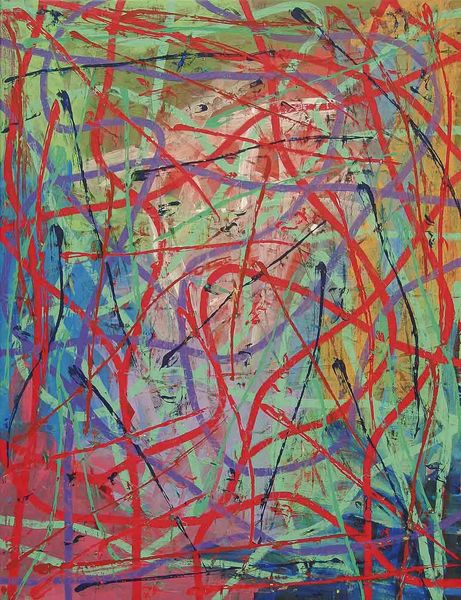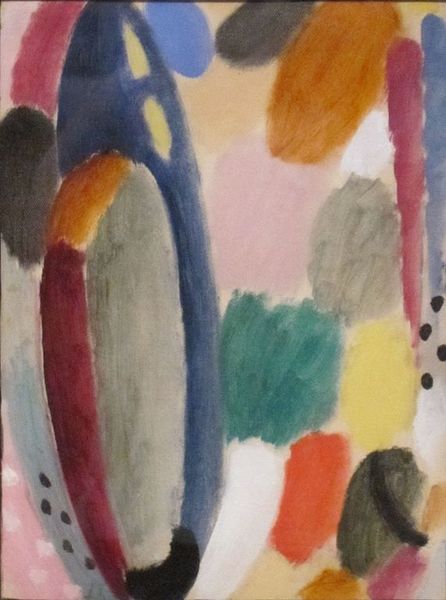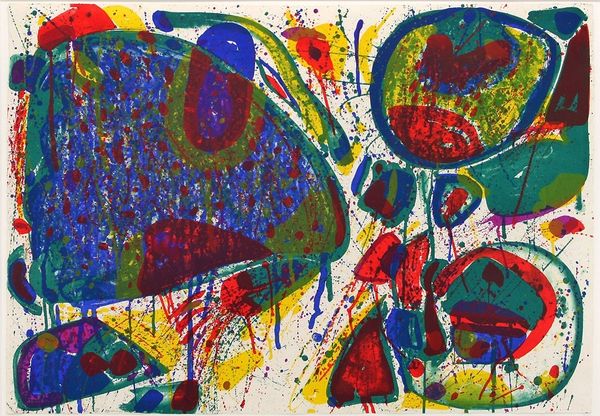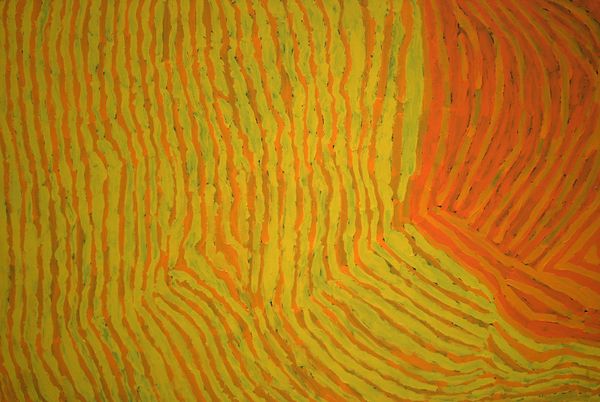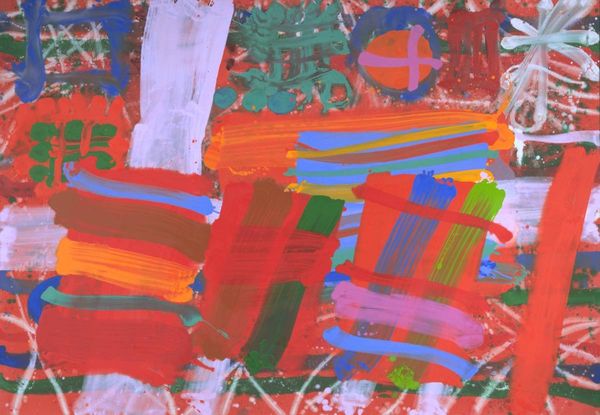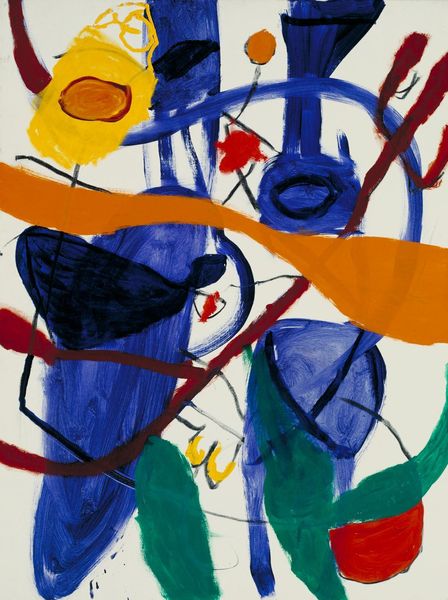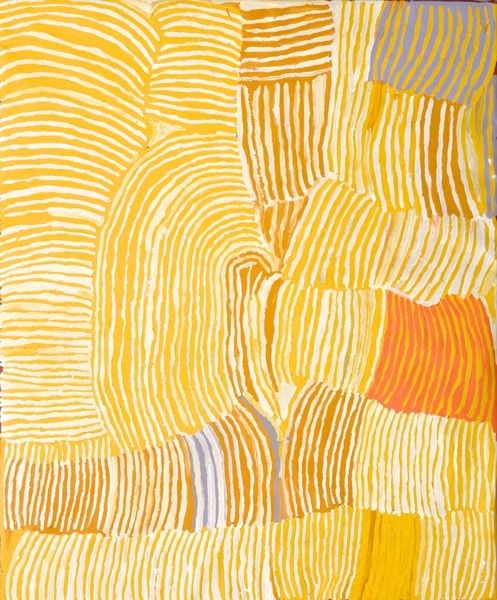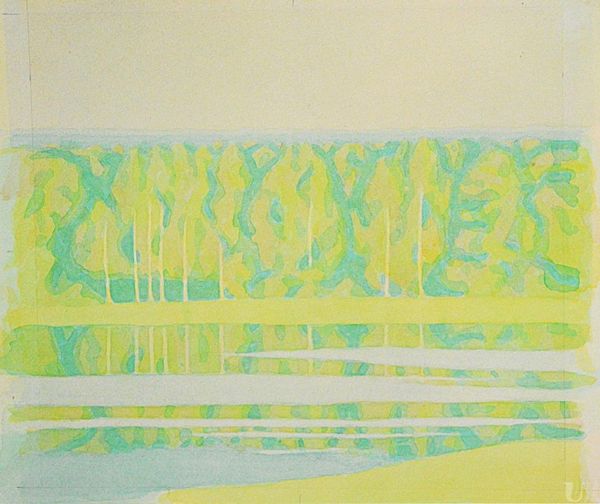
Copyright: Alice Baber,Fair Use
Curator: Right, let’s turn our attention to Alice Baber’s “Red, Yellow and Blue,” dating from 1960. It's an acrylic on canvas, characteristic of her colorful abstract style. Editor: Immediately, I'm struck by the boldness of the primary colors. It’s almost playful, yet there's a restraint in the composition, preventing it from becoming chaotic. What attracts you to this specific artwork? Curator: I see these biomorphic shapes as resonant vessels of archetypal experience. The interpenetration of colors is really her attempt to make visible those invisible inner connections, those threads that tie us together at a fundamental level. We're speaking of the Jungian collective unconscious here, a visual language attempting to render psychological truths through organic forms. Editor: Well, considering it’s acrylic on canvas, I wonder about the surface texture. Does it give the piece a different feel than if she’d used oil, perhaps allowing for quicker layering and a brighter finish? And was this scale common for her? Knowing that could really contextualize our understanding of this period of work. What statements was Baber making about commercial art production versus fine art? Curator: Those vibrant colours she used suggest a link to a Fauvist sensibility. You've also mentioned Pop Art - but it's interesting, isn’t it, that while on the surface there may seem something superficial, this commitment to color holds such symbolic power in this particular piece? The way that each shade overlaps implies certain depths in human expression: what are the roots of red, or yellow, and blue in our memories as a culture? Editor: Right, and to understand this, shouldn't we be equally examining how prevalent acrylic paint was in 1960? Was it cost-effective and therefore democratic, inviting a more diverse range of artists? Or was it considered a more 'commercial' material compared to traditional oil paints, and thus a challenge to conventional fine art boundaries? Curator: It's a dialogue, certainly! I see both angles at play. It also could mean we should analyze her biography further in search of answers that no mere materialist analysis will provide... Ultimately, for me, it’s the enduring quality of human symbolic expression which keeps these paintings alive beyond questions of mere materials. Editor: Maybe it is about that balance! An exciting puzzle in her approach to production, I must say.
Comments
No comments
Be the first to comment and join the conversation on the ultimate creative platform.
